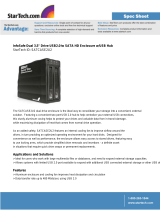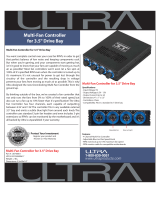
iii PowerEdge T420 Technical Guide
Table of contents
1 System overview ..................................................................................................................................................................5
Introduction .........................................................................................................................................................................5
New technologies ............................................................................................................................................................. 6
2 System features ................................................................................................................................................................... 7
Comparison of PowerEdge systems ............................................................................................................................... 7
Specifications ..................................................................................................................................................................... 8
3 Chassis views and features .............................................................................................................................................. 11
Chassis views ..................................................................................................................................................................... 11
Chassis features ................................................................................................................................................................14
4 Processor ............................................................................................................................................................................ 17
Processor features ............................................................................................................................................................ 17
Supported processors ...................................................................................................................................................... 17
GPU support ......................................................................................................................................................................18
Chipset ................................................................................................................................................................................18
5 Memory ............................................................................................................................................................................... 19
Supported memory .......................................................................................................................................................... 19
Memory configurations .................................................................................................................................................. 20
Memory speed ................................................................................................................................................................. 20
Memory RAS features....................................................................................................................................................... 21
6 Storage ............................................................................................................................................................................... 23
Internal storage ................................................................................................................................................................ 23
External storage ............................................................................................................................................................... 23
Storage controllers .......................................................................................................................................................... 24
Optical drive ..................................................................................................................................................................... 25
Tape drive .......................................................................................................................................................................... 25
7 Networking and PCIe ...................................................................................................................................................... 26
Embedded NIC controller .............................................................................................................................................. 26
PCIe expansion ................................................................................................................................................................ 26
8 Power, thermal, and acoustics ...................................................................................................................................... 28
Power consumption and energy efficiency ................................................................................................................ 28
Power supply units .......................................................................................................................................................... 29
Thermal and acoustics.................................................................................................................................................... 30
9 Rack rails and cable management ................................................................................................................................ 33
Sliding rails ........................................................................................................................................................................ 33
Cable management arm................................................................................................................................................. 34
10 Operating systems and virtualization ........................................................................................................................... 35
Supported operating systems ........................................................................................................................................ 35
Supported virtualization ................................................................................................................................................. 36
11 Dell OpenManage systems management .................................................................................................................... 37
Systems management solutions ................................................................................................................................... 37
OpenManage systems management ........................................................................................................................... 38
Dell server management operations ............................................................................................................................ 43
Appendix A. Additional specifications .......................................................................................................................... 45
Chassis dimensions ......................................................................................................................................................... 45
Chassis weight.................................................................................................................................................................. 45
Power supply specifications .......................................................................................................................................... 45
Environmental specifications ........................................................................................................................................ 46
Video specifications ........................................................................................................................................................ 47
Rack rail specifications ................................................................................................................................................... 48
USB peripherals ................................................................................................................................................................ 48





















